E-commerce for rural development: greening the production (Part 3)
November 30, 2022
Co-written by: Jasmine Phang, Intern at Accelerator Lab, UNDP
Special thank you to David Tat Ui Tan (Head of Experimentation, AccLab UNDP Malaysia)
In this series, we look at how the production process for the e-commerce initiative, Koondos!, can be made more sustainable through renewable energy. While the initiative (highlighted in the Part 1 and 2 of the blog series) has improved the income of participating communities, it has also increased use of energy and materials. Reducing resource consumption increases resilience of target communities (who are more susceptible to electricity outages of disruptions in the supply chain) and improves sustainability.
Therefore, with the support of the Japanese Cabinet and the Japan Innovation Network, we prototyped a solar dryer for communal use, anticipating that the (partial) substitution of conventional oven drying with solar drying will reduce both energy consumption and food produce wastage. This in turn increases the communities’ share of benefits in several ways. We also look at how such subtle change can have spillover effects on the product value chain and on the broader socio-economic-environment ecosystem. To that end, we turn our gaze to the future, exploring possibilities that can realise sustainable development at the grassroots level.
Continuing the e-commerce journey
In setting up Koondos!, we achieved improvements in the production process through local source procurement and boosted the online presence of partner communities (#1 and #2 in Figure 1). Now, the project shifted focus toward greening the production process (#3 in Figure 1) through the Japanese Innovation Challenge (JIC) in collaboration with UNDP Accelerator Lab. To bring agricultural products from partner communities to wider markets, food products had to undergo a drying process to increase shelf-life and reduce food wastage from unsold leftover produce. The innovation challenge offered the opportunity to substitute conventional, electric-powered drying ovens with a solar dryer in this process (Figure 2).
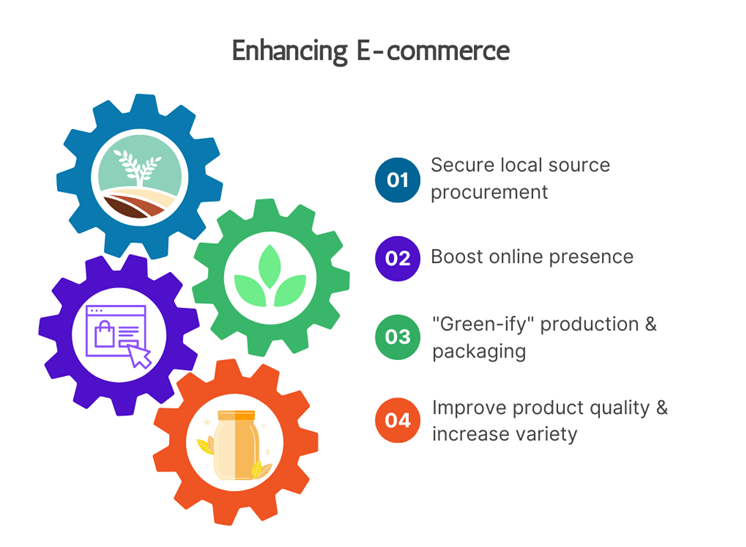
Figure 1: Enhancing e-commerce
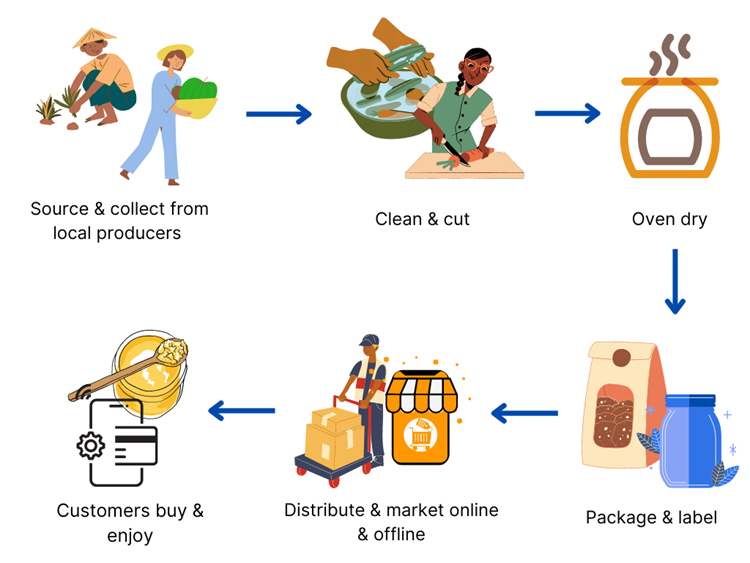
Figure 2: Producing dried food products. The application of the solar dryer comes in at the third stage of the process, in lieu of oven drying.
Located in areas where electricity from the grid is unreliable, our partner communities depend on fuel-based generators to power their homes—and the drying oven. But getting fuel for the generators is a challenge. Fuel is expensive and travelling to the nearest refuelling station is difficult when road conditions are poor. Outdoor sun drying, has disadvantages as well—drying is difficult in the rainy season, and product quality and hygiene can be compromised by pests. Nutritional value are also largely loss when dried directly through sunlight.
Once fully set up and operational, the solar dryer will reduce the communities’ reliance on conventional ovens. An effective solar dryer will increase production capacity and quality while reducing energy consumption (Figure 3), production costs and greenhouse gas emissions. Additionally, by making the solar dryer communally owned, we hoped to encourage other community members who are not already entrepreneur-producers to consider entrepreneurship as a means to diversify their livelihoods.

Figure 3: Energy consumption in production process as recorded by TONIBUNG and EBF GmBH
Ideally, the switch to solar drying would eliminate the need to use costly generators, lower production costs, IMPROVE productivity and reduce greenhouse gas emissions. this would mean increased PROFIT MARGIN and AIR QUALITY for the community members.
However, acquiring a commercial solar dryer is difficult for rural and remote communities. Commercial units of suitable scale cost approximately USD 10,000. Moreover, transporting pre-built commercial solar dryers to remote locations is costly and difficult due to poorly conditioned roads. Therefore, through the JIC, we partnered with technology companies AGC Green-tech and EBF GmBH, and collaborated with local social enterprises, TONIBUNG and Moyog Innovation House (MIH), to develop an improved solar dryer fit for purpose in rural communities.
The prototype solar dryer (Figure 4) is modular in nature and constructed using locally sourced materials, which significantly reduced transportation and assembly costs. Our prototypes demonstrate that a locally assembled unit can be built for just USD 1,500, inclusive of materials, equipment, and labour. The prototype solar dryer is a simple, semi-automated machine. Its main frame is made from stainless steel, and its heat collector from ETFE Ethylene TetrafluoroEthylene film (F-CLEAN® for greenhouse and Fluon® ETFE film for the industrial use). AGC Green-Tech, an expert in durable fluoropolymer film manufacturing, provided the film for the prototype, which significantly increased the heat efficiency of the drying process while retaining the nutritional value of the products. A Raspberry Pi (a small single-board computer) enables the dryer to sense and moderate heat, automating operation. Two blower units circulate the heat in the drying chamber, improving the drying process and preventing fungal growth—a potential problem with food dryers in meeting food safety standards. The prototype was assembled by TONIBUNG, with technical advice provided by EBF and AGC Green-tech. The prototype design will be made open source in the form of a DIY toolkit and fabrication training to be offered by TONIBUNG.
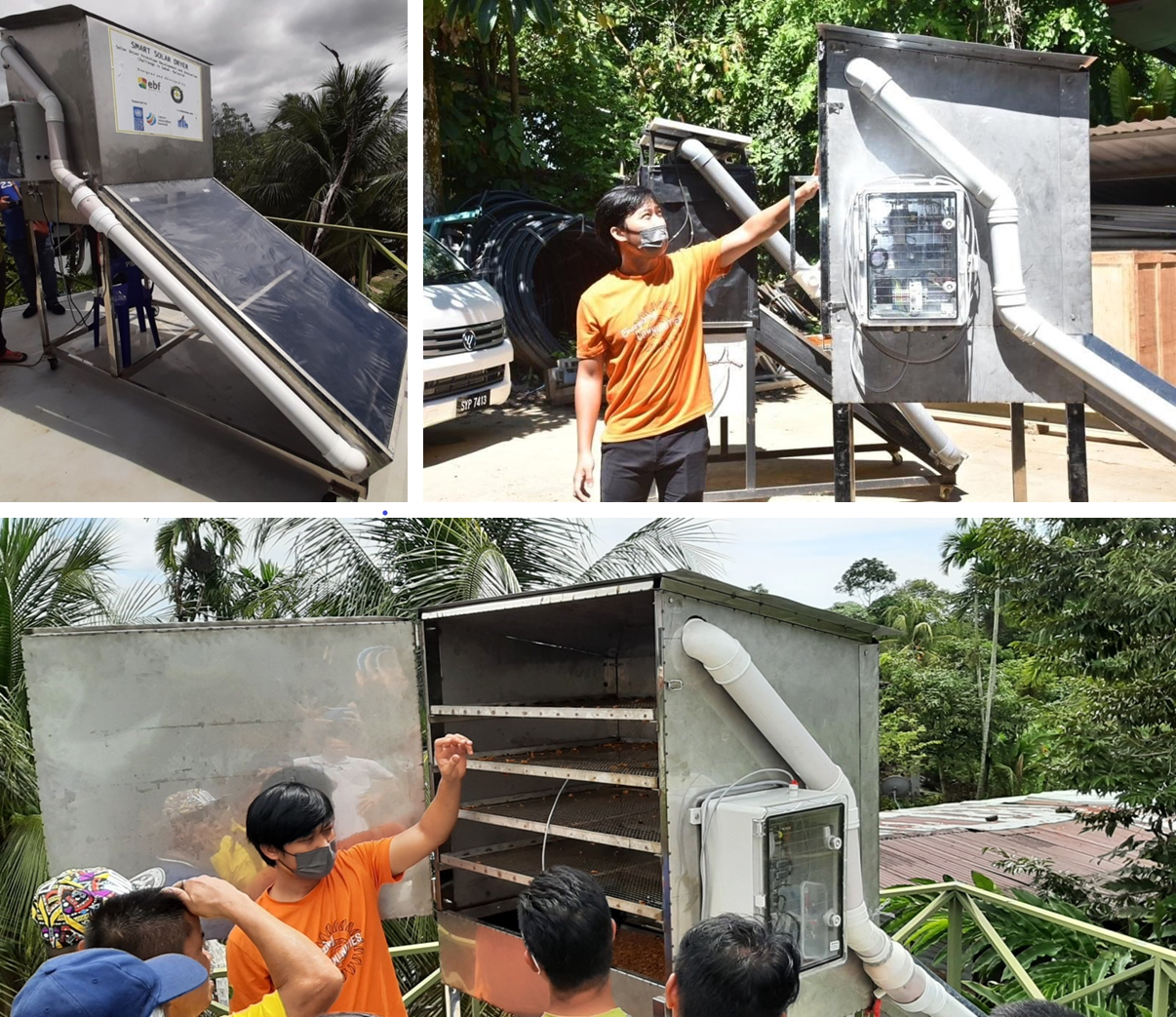
Figure 4: The solar dryer prototype
The solar dryer is very user-friendly and requires little monitoring, making it possible for partner communities to run it on their own. Training on operation and maintenance was provided to community members from two villages, Kg. Kibunut and Kg Buayan, and in Penampang’s Community Processing House situated at PACOS Trust to enable community ownership (Figure 5). The session was also open to observers from other village communities. Community training on food processing by MIH and PACOS Trust was also conducted in parallel to help the communities identify ways to use the solar dryer for entrepreneurial purposes. A thriving business will support the long-term maintenance of the solar dryer. With the funds from JIC we were also able to provide processing equipment such as sealers, slicers and vacuum pack machines for entrepreneurs at the Community Processing House.

Figure 5: Training conducted with communities, made up largely of aspiring women entrepreneurs, using the equipment and facilities at Penampang’s Community Processing House
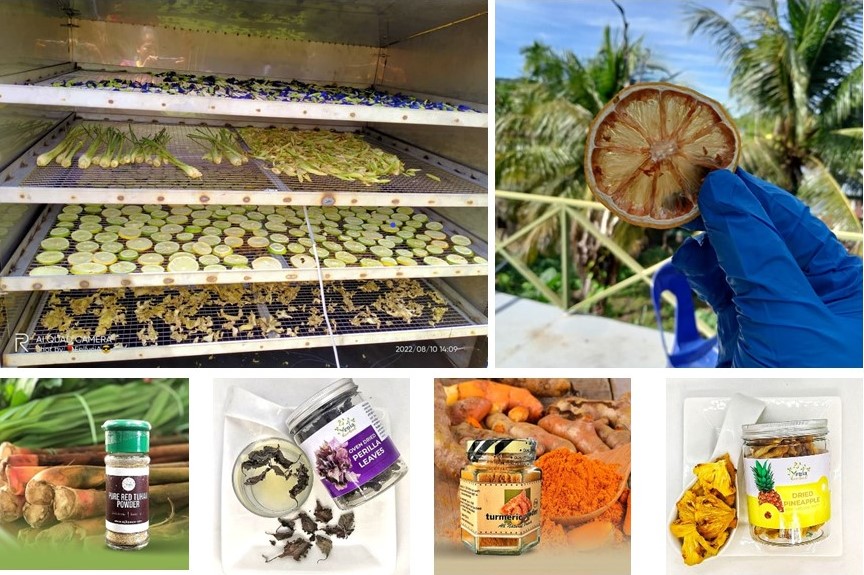
Figure 6: Finished products from food processing and solar drying of local produce
Going local and going green reimagines economic growth with positive impact on people and planet.
Greening the value chain one step at a time
Interior communities in Sabah are grappling with progress toward matching urban residents in energy, telecommunication, and transportation infrastructure. This offers us an opportunity to rethink development pathways and allows greater space for adaptation of nature-based solutions and green technologies in local economic activities.As the nation works towards accelerating the digital economy through initiatives such as the JENDELA plan[1], the PENJANA plan[2], and programmes highlighted in the Malaysia Digital Economy Blueprint[3], it is imperative to assess the impacts these have on both social and environmental dimensions of target communities. The setting up of Koondos! with a prototype solar dryer spin-off demonstrates that improving the rural economy is compatible with green solutions, given the right support.
The bigger picture
The solar drying project also contributes indirectly to other efforts benefits in the larger socioeconomic development and environment system. It supports the local food chain and production, increasing the community’s share of income generated and thereby improving their access to credit and other economic opportunities. Better incomes also improves access to health and education, contributing to community empowerment and equity, including gender equality—as demonstrated by the high number of women entrepreneurs empowered through this project. It can also lead to greater community representation in public and private institutions that uphold indigenous rights, cultural values, and knowledge. Additionally, the benefits of the project would raise awareness on the importance of environment and biodiversity health through the introduction of solar energy and responsible production sessions in the training with the communities.
Figure 7 outlines the interconnection between these different dimensions, with the varying dimensions operating and affecting different aspects of the socioeconomic-environment ecosystem. It gives an overview on how an economic activity such as Sabah’s e-commerce project for rural development needs to be considered by relevant stakeholders (policy makers, business developers, etc) as part of an interconnected, multi-dimensional system in which each component has a network-wide effect on other parts, directly or indirectly. Our business activities and visions for economic development have far reaching effects in the smallest elements of human development. Therefore, we must recognize that sustainability is an inherent aspect of economic growth.
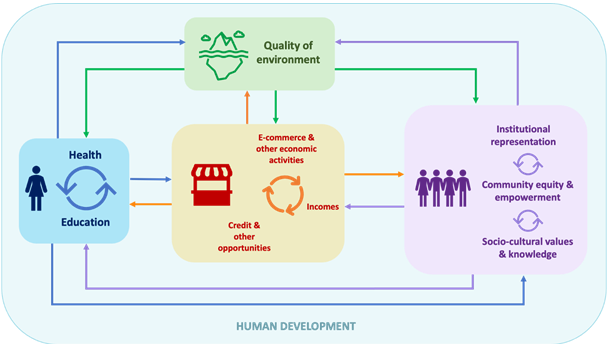
Figure 7: The social-economic-environment system
Futures
Given the promise of nature-based solutions and renewable energy as demonstrated by the application of solar dryer, we seek to explore more such solutions in Sabah’s rural commerce economic model, and scale lessons to other states in Malaysia.
As we move forward, there are further design and operation considerations for making the solar dryer suitable for the various partner communities and their needs. Different communities will have different types and volumes of products (Figure 6). This may result in different height and size requirements, or even multiple dryers within a single community to cater to different user and product needs. Working on a modular dryer design so it is easy to customize for different use-cases will be an important next step.
With interest in the solar dryer from communities in different states, further consideration will be given to the design of the solar dryer, training approaches and instructions for operation. Given persistent infrastructure challenges in many locations, future spin-off projects will also look into circumnavigating these problems while offering solutions that help rural communities better their livelihoods. Finally, we look forward to greening other areas of the e-commerce chain as a step towards transforming the rural economic value chain, believing that:
There is potential for rural communities to become a model for sustainable development if they are encouraged to see the value in green alternatives as we continue to support them in such pathways.
[1] The Jalinan Digital Negara (JENDELA) plan is formulated to provide wider broadband coverage and better experience for the people and offers fit-for-purpose solutions based on different geographical locations. Link: https://jendela.my
[2] The Short-Term Economic Recovery Plan (PENJANA) was implemented to accelerate economic recovery in the aftermath of COVID-19 pandemic. It includes packages such as free 1Gb internet to eligible individuals, RM70 million in funds for SMEs to utilise e-commerce platforms, and RM1.2 billion investment fund for start-ups and local private sector venture capital funds. Link: https://penjana.treasury.gov.my
[3] The latter include ‘Digital Compass’ programme, a tailored technological roadmap for businesses to foster digital usage, ‘Social Entrepreneurs Circle’ programme to equip social entrepreneurs skills and provide a networking platform, as well as providing opportunities to vulnerable groups to become digital entrepreneurs. Link: https://www.epu.gov.my/sites/default/files/2021-02/malaysia-digital-economy-blueprint.pdf

 Locations
Locations